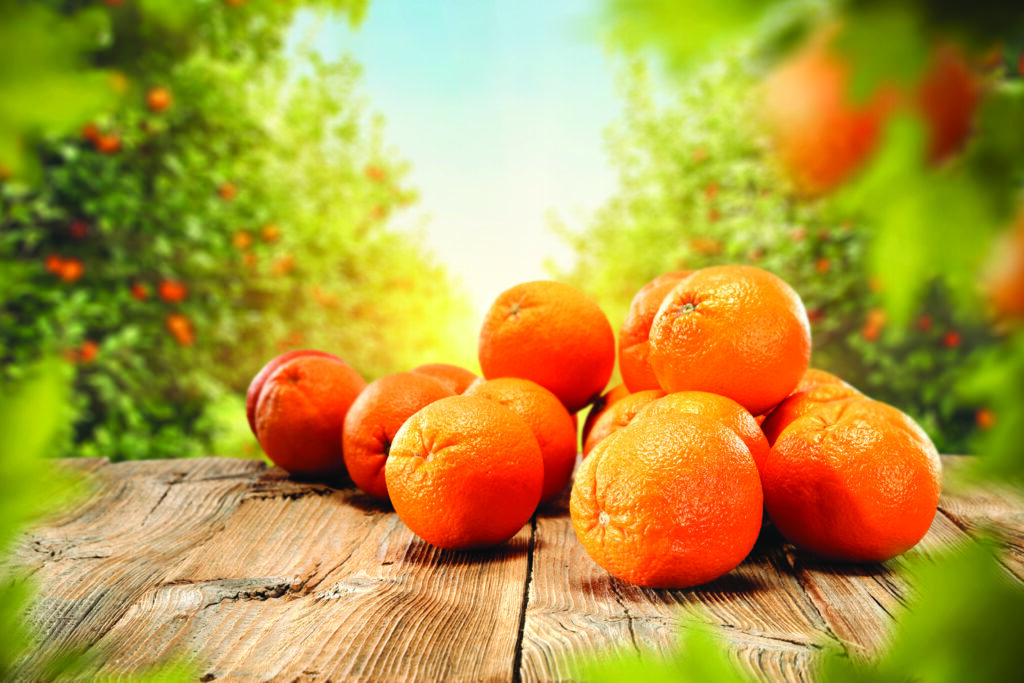State’s Citrus Crop Rebounded, Growers Optimistic for Future
by TERESA SCHIFFER
It’s no secret that the Florida citrus industry has suffered some setbacks over the last few years, primarily due to the scourge of citrus greening or Huanglongbing (HLB). The good news is that researchers have made great strides in their fight against the disease, and many groves seem to be on the rebound. This year’s citrus harvest was pretty good for most growers.
A lot of growers were very happy with the crop this year. Numbers are up, after having been considerably down the year Hurricane Irma struck. Dr. Michael Rogers, Director of the Citrus Research and Education Center and statewide coordinator of citrus research and extension programs at UF, commends growers for their hard work overcoming HLB to get the state’s citrus harvests back on track.
The key for growers has been learning how to care for infected trees. While there’s no “cure” for greening, there are steps growers can take to mitigate damage to the fruit. Adapting how they apply nutritional programs, how they water the trees, and generally alleviating stresses on already-diseased trees has gone a long way towards improving yields.
“In general, I think folks are seeing their yields increase and rebound,” says Dr. Rogers. “Maybe not where we were a decade ago, but with the current high prices we’ve had, the growers who have managed their crops have made some money.”
HLB is still the number one challenge facing citrus in Florida. In most groves, many trees are infected with the greening pathogen. It continues to be the main limiting factor affecting productivity and yields. The disease threatens the tree by weakening it overall. The root system is weakened, so it therefore cannot support heavy crop yields. The diseased tree cannot take up water and nutrients as well as a healthy tree.
“It’s really coming down to spoon-feeding the right nutrients,” Dr. Rogers explains. This helps the tree get what it needs to maintain a healthy yield without the heavy fruit drop right before harvest.
Despite the positive steps being made, yields are still down due to HLB. The good news is that prices have been high for citrus. Growers are spending more to produce the crop, but they’re getting paid more, too. The hope is that prices will remain high so growers can afford to stay in business.
Citrus greening isn’t the only issue facing growers though. Citrus canker is still an issue in certain areas. A more recent introduction is a fungal disease called citrus black spot, which is affecting groves in southwest Florida. Citrus black spot can cause trees to drop fruit early. Certain areas are being quarantined, meaning fruit cannot be moved from these areas without being tarped.
A new pest that has been found in Florida is the lebbeck mealybug. In areas where it affects crops, such as Africa and the Mediterranean, it has been known to cause as much as fifty percent fruit loss. It’s a new pest here, and growers in the central part of the state have had some problems with it recently. Researchers are currently working on control techniques for this pest.
The mealybugs were first identified as a problem when they started showing up in the mesh bags some growers put over young trees. They are spread by the wind as tiny juveniles, tiny enough to get through the holes of the mesh. The population then explodes inside the bag as the bugs are protected from natural predators, such as lady beetles. The pest entered Florida around 2009 in Palm Beach County, when it was found on some ornamental plants. Since then, it’s made its way up to Central Florida. As growers have backed off on their spraying for psyllids, it has given other pests room to grow.
Dr. Rogers is optimistic about the future of the citrus industry in Florida. “I think it (the citrus industry) looks really good,” he says. “I believe that our industry is going to continue strong moving forward.” HLB will still be a threat, but the growers who have managed it well will probably continue to do so and will do fine. Growers have learned to live with it, so now the major factor for crop success will be price.
Roy Petteway has 400 acres of citrus groves and was pleased with this year’s harvest. “It was probably as good as I’ve had in 10 years,” he says. “With prices as high as they are and production, this is as good a year as I’ve had in a long, long time.” Petteway also operates a citrus nursery and finds that Hamlin and Valencia are still very popular with growers, as are a lot of the old standards. The market for Florida’s juice oranges is still healthy and strong. Sugar Belle and SunDragon are two other juice oranges that show strong resistance to HLB.
Higher-density planting seems to be the wave of the future for growers. Dr. Clay Pederson, Managing Director of Agromillora Florida, suggests using a super high-density method that resembles the plantings of olives and apples. His method, combined with continuous hedging, will produce more fruit with a high juice quality. It also allows better penetration of insecticides and other inputs into the canopy, which will help better control HLB.
There will be a Citrus Expo in Fort Myers August 14-15, so that will be a chance for growers to come together to learn what’s new in the industry. UF/IFAS will have representatives present to give information on pest control and other topics. It’s a great opportunity for growers and researchers to have some dialogue.

